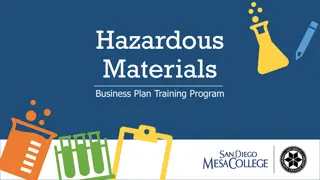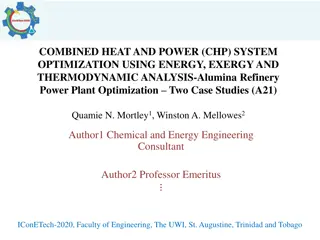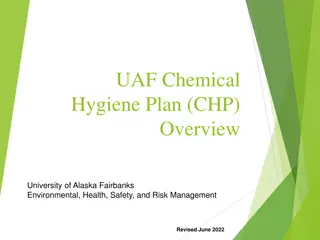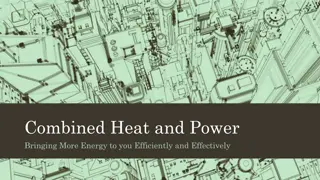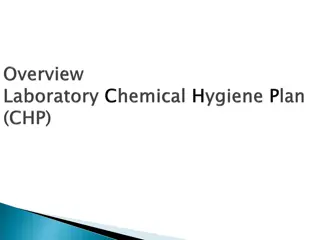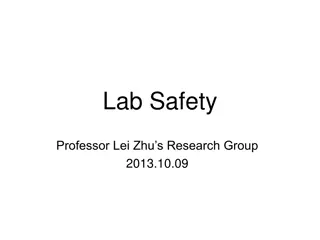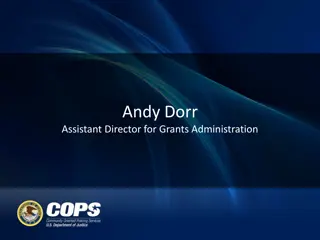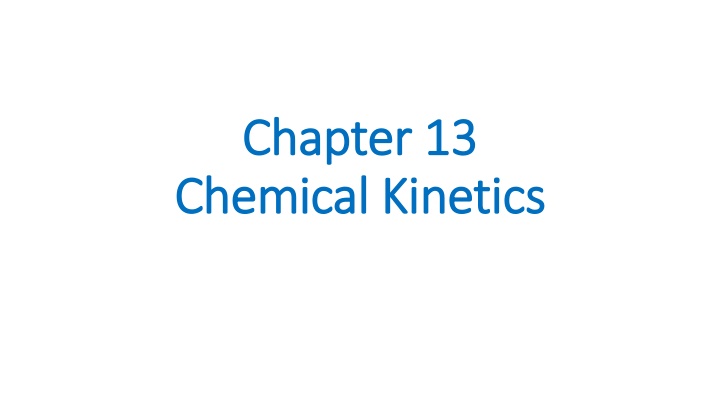
Chemical Kinetics: Understanding Reaction Rates and Factors
Explore the fascinating realm of chemical kinetics and learn how reaction rates are influenced by factors such as temperature, concentration, and catalysts. Discover the importance of rate expressions and how changing reactant concentrations can impact reaction rates. Dive into examples and experiments to enhance your understanding of this dynamic field.
Download Presentation

Please find below an Image/Link to download the presentation.
The content on the website is provided AS IS for your information and personal use only. It may not be sold, licensed, or shared on other websites without obtaining consent from the author. If you encounter any issues during the download, it is possible that the publisher has removed the file from their server.
You are allowed to download the files provided on this website for personal or commercial use, subject to the condition that they are used lawfully. All files are the property of their respective owners.
The content on the website is provided AS IS for your information and personal use only. It may not be sold, licensed, or shared on other websites without obtaining consent from the author.
E N D
Presentation Transcript
Chapter Chapter 13 Chemical Kinetics Chemical Kinetics 13
Kinetics: Introduction Kinetics: Introduction Studies the rate at which a chemical process occurs. Have we taken for granted that all reactions will occur just because we can write a balanced chemical equation for them? EX: H2(g) + I2(g)
Factors That Affect Reaction Rates Factors That Affect Reaction Rates 3) Temperature At higher temperatures, reactant molecules have more kinetic energy, move faster, and collide more often and with greater energy. 1) Physical State of the Reactants Molecules must come in contact with each other. The more homogeneous the mixture of reactants, the faster the molecules can react. 2) Concentration of Reactants As this increases, so does the likelihood that reactant molecules will collide. 4) Presence of a Catalyst Catalysts speed up reactions by changing the mechanism of the reaction. Catalysts are not consumed during the reaction.
Rate of Reaction Reaction rates are determined similar to velocity (change in distance over change in time) Instead, they look at the change in concentration over the change in time ( [?] ?) Example with 1:1 ratio of coefficients: A B At time 0 s, A has concentration of 1.0 M and B obviously has concentration of 0 M Let s say that 2 s later, A s concentration went to 0.98 M
Rate of Reaction: Example when coefficients are NOT 1:1 2N2O5 4NO2+ O2 Let s say that O2form at a rate of +9.0 x 10-6M/s So then, what would be the rate of formation of NO2? Must be four times that of O2, right? 4 x +9.0 x 10-6M/s = +3.6 x 10-5M/s What does that say about the rate of disappearance of N2O5? Must be two times that of O2, right? 2 x +9.0 x 10-6M/s = -1.8 x 10-5M/s
Rate Expressions To generalize, then, for the reaction aA + bB cC + dD [A] t [B] t [C] t [D] t 1 a 1 b 1 c 1 d = = Rate = =
Increasing the Concentration of Reactants Increasing the Concentration of Reactants aA + bB products Experiment # [A] [B] Initial Rate (M/s) 1 1.00 M Constant 0.01 2 2.00M Constant 0.02 3 Constant 1.00 M 0.01 4 Constant 2.00 M 0.04
Continued Thus the rate law for this is: R = k [A]1[B]2 First order in respect to A. Second order in respect to B Third order overall k is called the rate constant stays the same even as concentration of reactants change. R, the Rate, will change but k, the rate constant, will not.
Units of k Units of the rate constant vary They depend on the order of the reaction Let s look at the most common overall all orders of reactions: Overall order Example rate law Units of k 0th R = k[A]0 M/s 1st R = k[A]1 1/s 1 ? ? 2nd R = k[A]1[B]1 or R = k[A]2
Example with a real reaction Example with a real reaction 2 NO + 2H2 N2 + 2H2O Experiment [NO] (M) [H2] (M) Initial Rate (M/s) 1.25 x 10-5 1 0.0050 0.0020 5.00 x 10-5 2 0.0100 0.0020 1.00 x 10-4 3 0.0100 0.0040 Write the rate law. What is the overall order? Find the value of k. What is the rate when NO is 0.012 M and H2 is 0.0060 M?
Laws: 1st st order Integrated Rate Integrated Rate Laws: 1 order Using calculus to integrate the rate law for a first- order process gives us: ln [A]t ln [A]0= kt [A]0 is the initial concentration of A. [A]t is the concentration of A at some time, t, during the course of the reaction.
Example Example The conversion of cyclopropane to propene is a first order reaction with a rate constant of 6.7 x 10-4 s-1 at 500 degrees C. If the initial concentration of cyclopropane is 0.0500 M, what is the concentration of cyclopropane after 30 minutes?
Half Half- -Life Life Half-life is defined as the time required for one-half of a reactant to react. Because [A] at t1/2 is one-half of the original [A], [A]t = 0.5 [A]0.
Half Half- -Life Life For a first-order process, this becomes: 0.693 k = t1/2 NOTE: For a first-order process, the half-life does not depend on [A]0.
1 1st st Order Half Life Example Order Half Life Example Hydrogen peroxide goes from 1.00 M to 0.500 M in 2.16 x 104 s. Assuming that this is a first order reaction, find k. 0.693 k = t1/2
Temperature and Rate Temperature and Rate Generally, as temperature increases, so does the reaction rate. This is because k is temperature dependent.
The Collision Model The Collision Model In a chemical reaction, bonds are broken and new bonds are formed. Molecules can only react if they collide with each other. Furthermore, molecules must collide with the correct orientation and with enough energy to cause bond breakage and formation.
Activation Energy Activation Energy In other words, there is a minimum amount of energy required for reaction: the activation energy, Ea. Just as a ball cannot get over a hill if it does not roll up the hill with enough energy, a reaction cannot occur unless the molecules possess sufficient energy to get over the activation energy barrier.
Arrhenius Arrhenius Equation to Calculate Equation to Calculate E Ea a Ln k2 = - Ea 1 - 1 k1 R T2 T1 R is 8.314 J-mol/K. Thus Ea will be in Joules
Example Example Rate constants for the isomerization of methyl isocyanide are listed below. Find the activation energy (in kJ/mol) from 470 K to 510 K. k (s-1) T (K) 5.79 x 10-5 470 1.36 x 10-4 480 3.10 x 10-4 490 6.81 x 10-4 500 1.45 x 10-3 510
Catalysts Catalysts increase the rate of a reaction by decreasing the activation energy of the reaction. Catalysts change the mechanism by which the process occurs.

